
BV 142

The BV 142 was basically a land-based version of the BV 139, the long-range float seaplane that first flew in 1936. The success of the 139 prompted the company to evolve it into a land-based version using as many components of the float plane as possible. The intended role for the 142 was long range mail plane capable of operating over distances of up to 2,735 miles. The first prototype flew on October of 1938. A second prototype followed several weeks later. An addition two prototypes joined the test program in the Spring and Summer of 1939. It was intended that the four aircraft would be operated on transatlantic mail carrying flights by Lufthansa. However after a few exploratory flights Lufthansa returned the first prototype and plans for commercial operations was canceled.
Shortly before the outbreak of the war the second prototype was chosen to be modified for use as a long range maritime and strategic reconnaissance aircraft. Since it would be operating outside the range of fighter escort, emphasis was placed on defensive armament. The nose was elongated and glazed for the bombardier with a mounting for a 7.9-mm MG15 machine gun. An electrically operated dorsal turret also mounting an MG15 was installed aft of the wing trailing edge. A ventral gondola from an He 111 was fitted housing a similar weapon. Ports were added in the waist area for two more MG15's. The mail compartment aft of the main spar became the Bomb bay. The rear portion of the fuselage had no access to the flight deck so a hatch in the added in the fuselage decking. The bomb load could consist of eight 110 lb. or four 220 lb. bombs. Extensive radio and navigation equipment was installed and the crew was upped from four to six, consisting of a pilot, co-pilot, navigator/ bombardier, radio operator and two gunners. The conversion was completed in the Spring of 1940. The first prototype was also to be similarly modified as were the other two prototypes. However the need for transports during the invasion of Norway resulted in the last two prototypes being used in that capacity. Their ultimate fate is unknown. The usage of the two modified aircraft was limited by their vulnerability as their performance when carrying a full war load was below what was originally anticipated and by 1942 they had been withdrawn from service.
The Kit
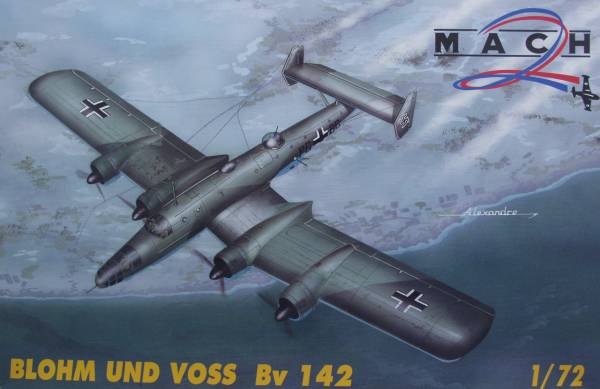
The Mach 2 kit comes in a box with a sturdy corrugated bottom half and a rather flimsy thin cardboard top. The contents is contained within a single plastic bag. This kit has one of the better box top art renditions of all the kits in this series. This kit, like all Mach 2 kits I have seen, suffers from heavily flashed small parts, poor clear parts, rough surface finish with occasional globs of trash, sink marks an nasty ejector pin stubs that occasionally cause blemishes in the outer surface of the kit. The panel lines are recessed and a reasonable size and uniform. The sprue attachment points are heavy and will require care when removing parts from them. Like most short run kits it has no alignment pins and fit issues can be expected. On a positive note this kit has some of the best rendered radial engines of any of the Mach 2 kits I have seen. They do have a bit of flash that needs removed but they should look nice when painted up. One of the prop blades on mine was broken at the hub but didn't look like it would be all that hard to fix. The kit has rather limited interior detail consisting of a couple floor pieces and bulkheads, a pilots seat and control column and instrument panel. There are pieces to box in the wheel wells with some structural detail inside. The sprues supplied are shown below. Total number of green parts is 81.

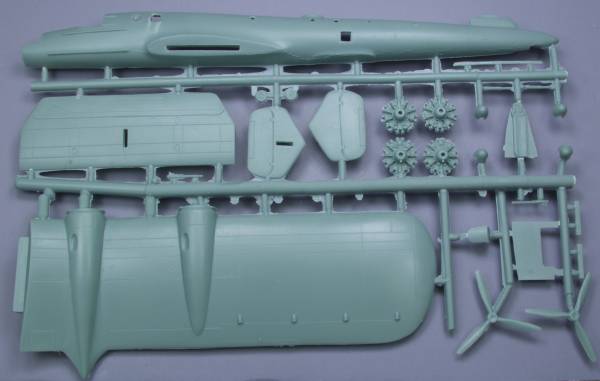
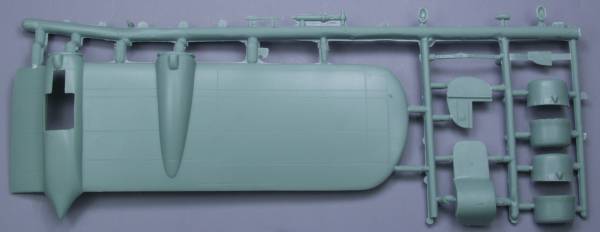
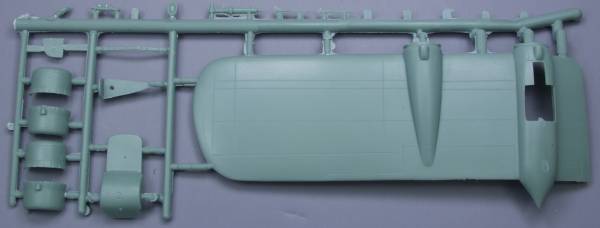
The clear parts, an oxymoron in this case, are typical Mach 2, thick and hardly clear and no amount of future will do them much good as can be seen below. Total number of clear parts is 23.
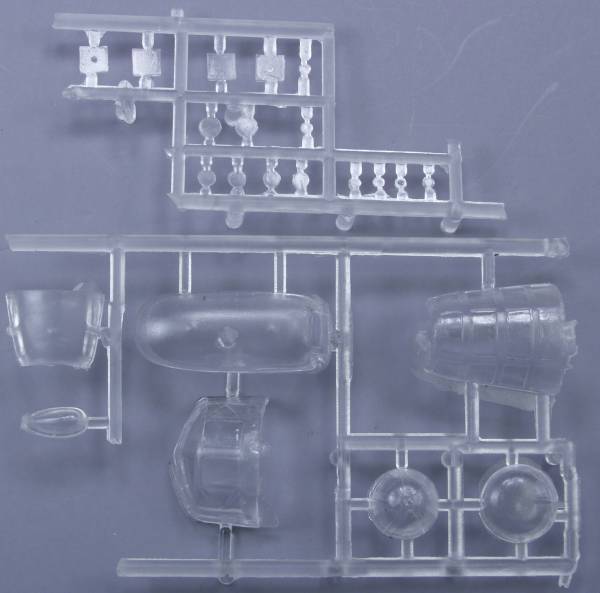
A couple examples of the issues found on Mach 2 kits are illustrated below. On the fuselage a strange ridge line runs down the side of the rear fuselage and a couple similar lines were found on the wings as well.
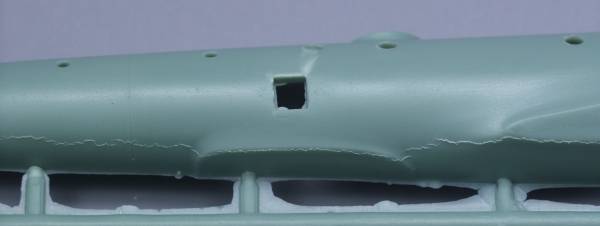
On both the photo above and photo below some deformation of the window openings can be seen.
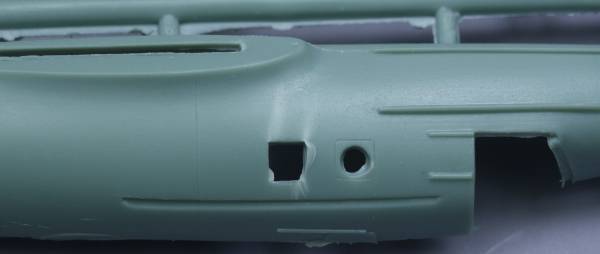
The decals provide markings for the V2 aircraft, the first one modified to the military configuration. These appear thin and well registered and include the basic markings and Swastikas. I have no experience with these so can't comment on how well they will work.
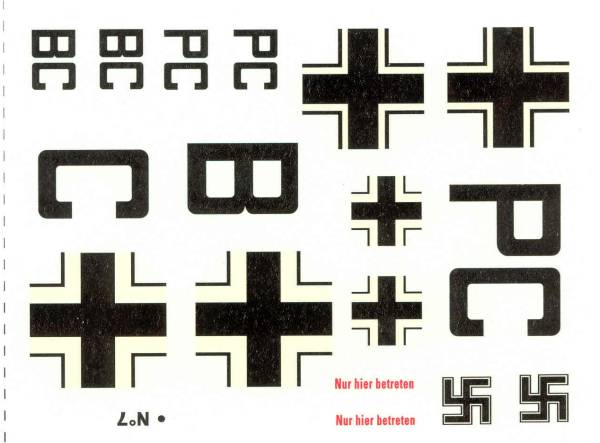
The instructions are on one side of an A4 size page and only includes sketches of how most of the small parts go together. A rudimentary painting diagram is shown for the camouflage which calls out the correct maritime colors of RLM 72 / 73 on top and RLM 65 underneath. The instructions are shown below.
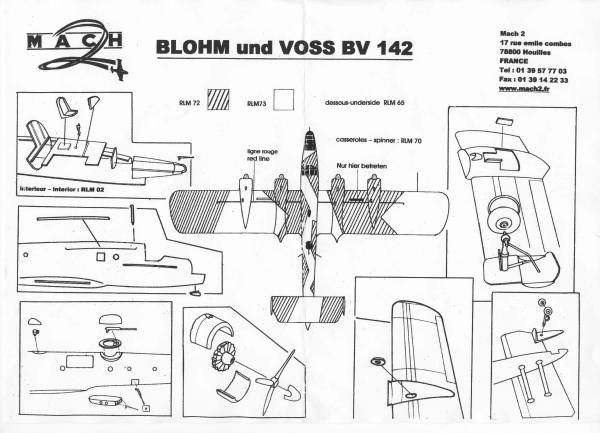
Conclusions
The kit will, like all Mach 2 kits, will require a great deal of time cleaning flash, trial fitting, filling, sanding and no doubt use of foul language but if you wish to build a BV 142 this is the only game in town. Recommended for modelers with experience building short run kits.
Links to kit builds or reviews
An in box review can be found here, either this guy got an earlier shot than I did or his concept of flash is different than mine !
References
"Warplanes of the Third Reich" by William Green
Back to the MISCELLANEOUS 1/72 page
Updated
6/1/08